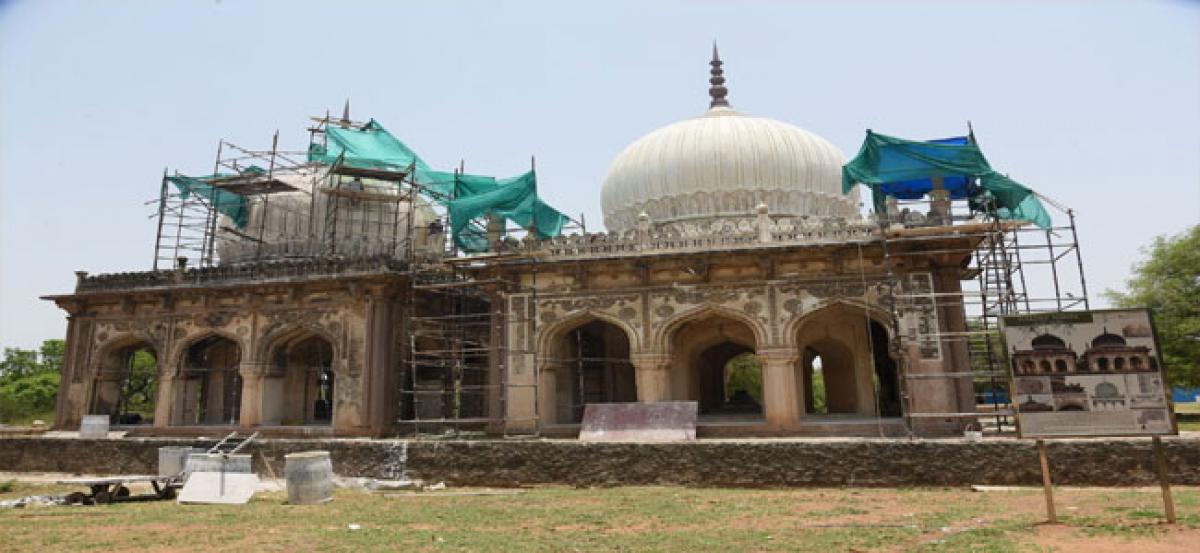Live
- Vajpayee’s statue unveiled in Berhampur
- Bengal school job case: Special court hearing today to monitor progress of framing charges
- CM, Naveen pay tributes to Vajpayee
- Freedom fighter, veteran CPI leader R. Nallakannu turns 100 today
- Pravati inaugurates Dandadhar tourism site
- Applications invited for PM housing scheme
- SOT police seize 14 kg Ganja at Chouttuppal RTC bus stand
- Delhiites unhappy with AAP, will vote for BJP: Manoj
- Majhi slams Cong over politicising Shah’s statement on Ambedkar
- Atishi may be arrested in fake case: Kejriwal
Just In

The Aga Khan Trust for Cultures AKTC ongoing conservation of the biggest necropolis in South India is well and truly on Six months after the tombs were thrown open to public, the necropolis that lies at the foothills of Golconda Fort is buzzing with activity
Hyderabad: The Aga Khan Trust for Culture’s (AKTC) ongoing conservation of the biggest necropolis in South India is well and truly on. Six months after the tombs were thrown open to public, the necropolis that lies at the foothills of Golconda Fort is buzzing with activity.
Tourists who had earlier confined themselves visiting Charminar, Chowmohalla Palace and the Salar Jung Museum have now included tombs in their itinerary. Staff at the tombs says that people have started coming in droves and add in the same breath that Ratish Nanda, conservation architect, who is overseeing the over Rs 100 crore project wants at least 20,000 people to visit the tombs.
Speaking to The Hans India from Delhi, Ratish said, “Thirty out of the 80 monuments have been fixed. We can say that 50 per cent of the conservation work has been completed.” Replying to allegations that the work is moving rather slowly, a member of AKTC, said that the conservation is all about adhering to and coming as close as possible to the original. The craftsmen work diligently in detailing and work on the intricate stucco work. P Anuradha Reddy, convenor, INTACH Hyderabad chapter, says, “The ongoing conservation work at the Qutub Shahi Tombs is something that we should be proud of.
People who could not see the tombs in their original grandeur will be able to.” She adds, “It was mentioned in the Travels of Monsieur De Thevenot about a green dome which over the centuries was covered with cement. Now once again we can see the green tiles on the tomb. This is conservation at its best.”
What separates the Qutub Shahi Tombs from the rest of the necropolises in the country is that the tombs are spread over acres juxtaposed with parks, age-old trees, arched verandas and baolis (step wells). The landscape is spread with 40 mausoleums, 23 mosques, six step wells, a hamam (Persian bath) and hidden parks that have been unearthed during conservation. Anuradha Reddy says, “One can see a medley of Iranian and Vijayanagara architecture. And that adds to the beauty.”

© 2024 Hyderabad Media House Limited/The Hans India. All rights reserved. Powered by hocalwire.com







